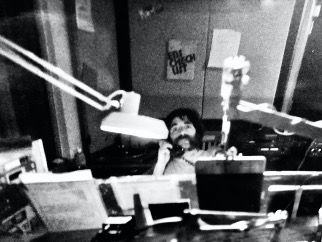Harry Shearer’s Le Show: Sonic Portal to News, Satire, Memory, History
A Le Show Sampler: Topical Comedy, Sonic Satire, Satire in Song
Shearer's avowed influences are Mel Blanc, "man of a thousand voices,"62 with whom Shearer worked on The Jack Benny Program;63 Paul Harvey, radio pioneer who was "famous for his pauses";64 Stan Freberg, who, among other accomplishments, "had hit records making fun of other hit records"65; "master musical satirist" Tom Lehrer;66 Bob Elliott and Ray Goulding, who performed as "Bob and Ray" and who "invented the modern radio comedy team";67 Dudley Moore, who performed with Peter Cook as "Pete and Dud" and "Derek and Clive";68 actor and comedian Peter Sellers;69 and Mort Sahl, "the dean of American satirists,"70 who, according to Shearer, "invented American political satire, that’s all."71
Shearer is "not only the best political satirist around," writer, publisher and veteran pundit Paul Krassner told the New York Times in 2003. "But there hasn't been anyone since Lenny Bruce producing these little theater pieces and playing all the parts. I edited Bruce's autobiography, and when anyone asks me who follows in his footsteps, I say it's Harry.'"72
Shearer's satiric sketches and songs distinguish Le Show from other topical comedy programs, along with his evocative, resonant, and versatile vocal instrument, his talent for ethopoeia, his extemporaneous and often playful commentary, and his imaginative use of sound. Shearer harnesses the immense capacity of sound to conjure images in listeners' minds, including of the host himself: on Le Show Shearer rarely mentions his almost literally countless other projects. He says his own name only a few times during any program.73
Across nearly four decades and dozens of technologies for audio production, recording, and circulation, Le Show has been Shearer's sonic commonplace book, a locus for curating and sharing information, sonic satire, and music. In addition to reading from newspapers and trade magazines, Shearer reports to listeners what he sees on television: "Strange, strange stuff, of course, always on television: It's my job to to watch as much of it as humanly possible and to glean those few nuggets worthy of mention."
 |
Regular recurring segments reveal that Shearer's sharing takes three major forms: reading news reports including public apologies, often with extemporaneous rhetorical flourishes, some tropes so deeply ingrained in his vocal instrument over decades that he cannot avoid them; creating sonic art for listeners in response to each week’s news stories; and playing music both of his, and not of his, own invention. Though the amount of music on Le Show decreased significantly after 9/11, the program continues to offer at least two musical tracks from other artists each week. For decades Shearer has enjoyed "opening the record library so I can browse and delve for your listening pleasure."
Le Show’s longevity makes this sonic archive particularly valuable for understanding late twentieth- and early twenty-first-century history and public affairs. Because Shearer focuses on specific events and practices that are too often buried in "the memory hole,"74 the Le Show archive provides an invaluable counterpoint to more conventional archives of U.S. and world news and culture.75
What follows is a small but representative sampler of Le Show's recurring segments and one-off satirical sketches and songs. Whether through factual news reports or his imagined "Alternative Scenario Playhouse,"76 Shearer’s satiric perspective on history and culture well deserves preservation — and listeners — for perpetuity.
